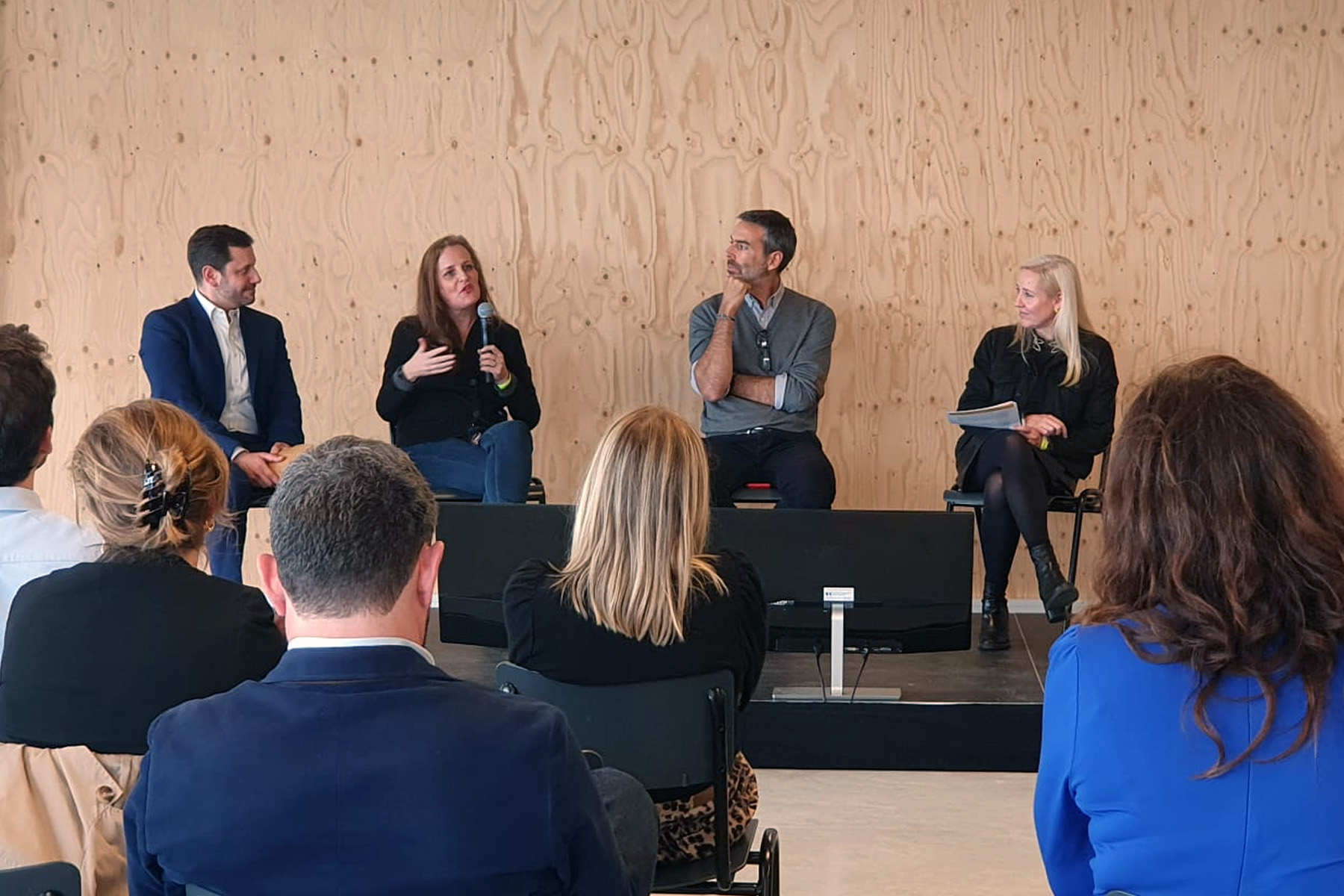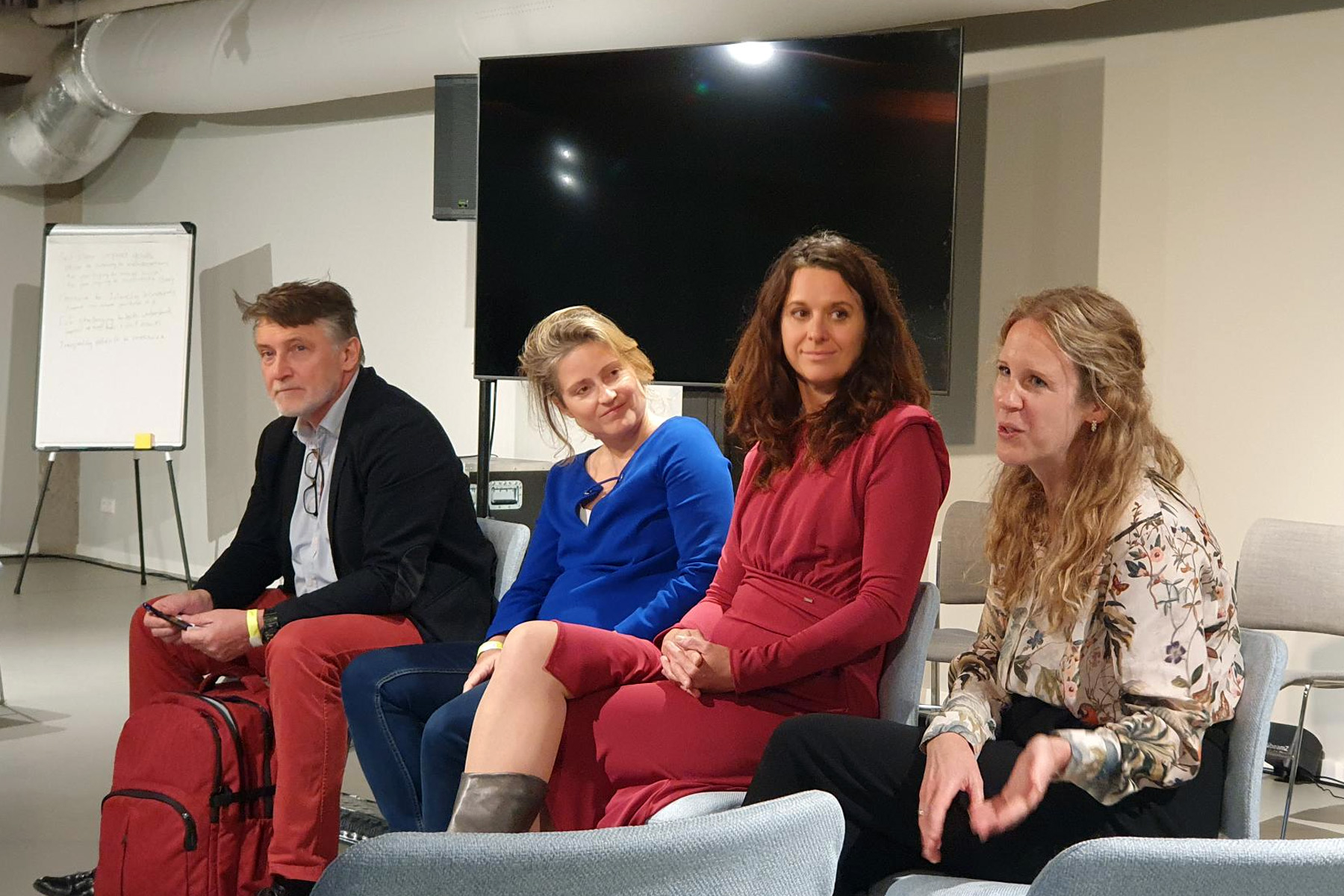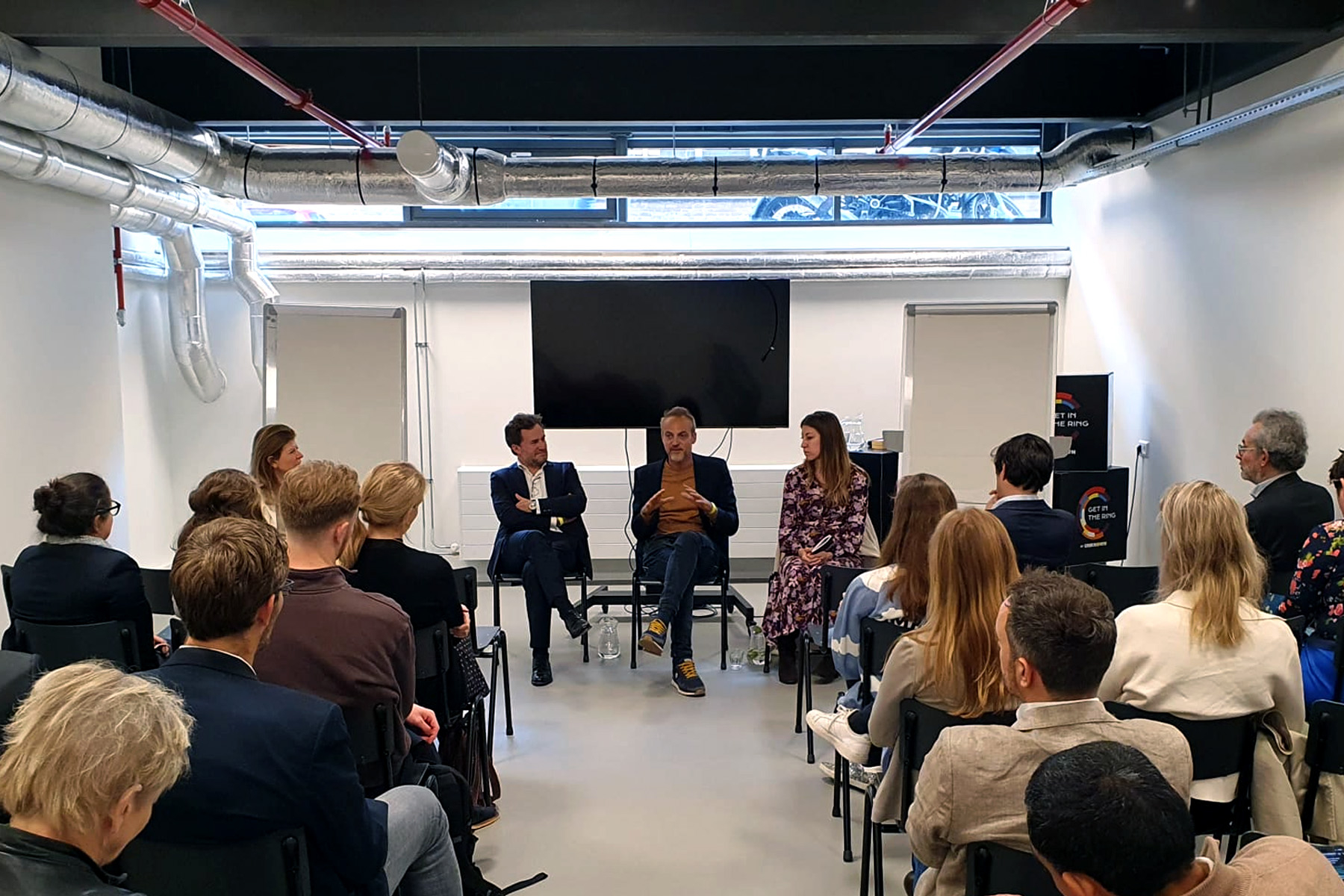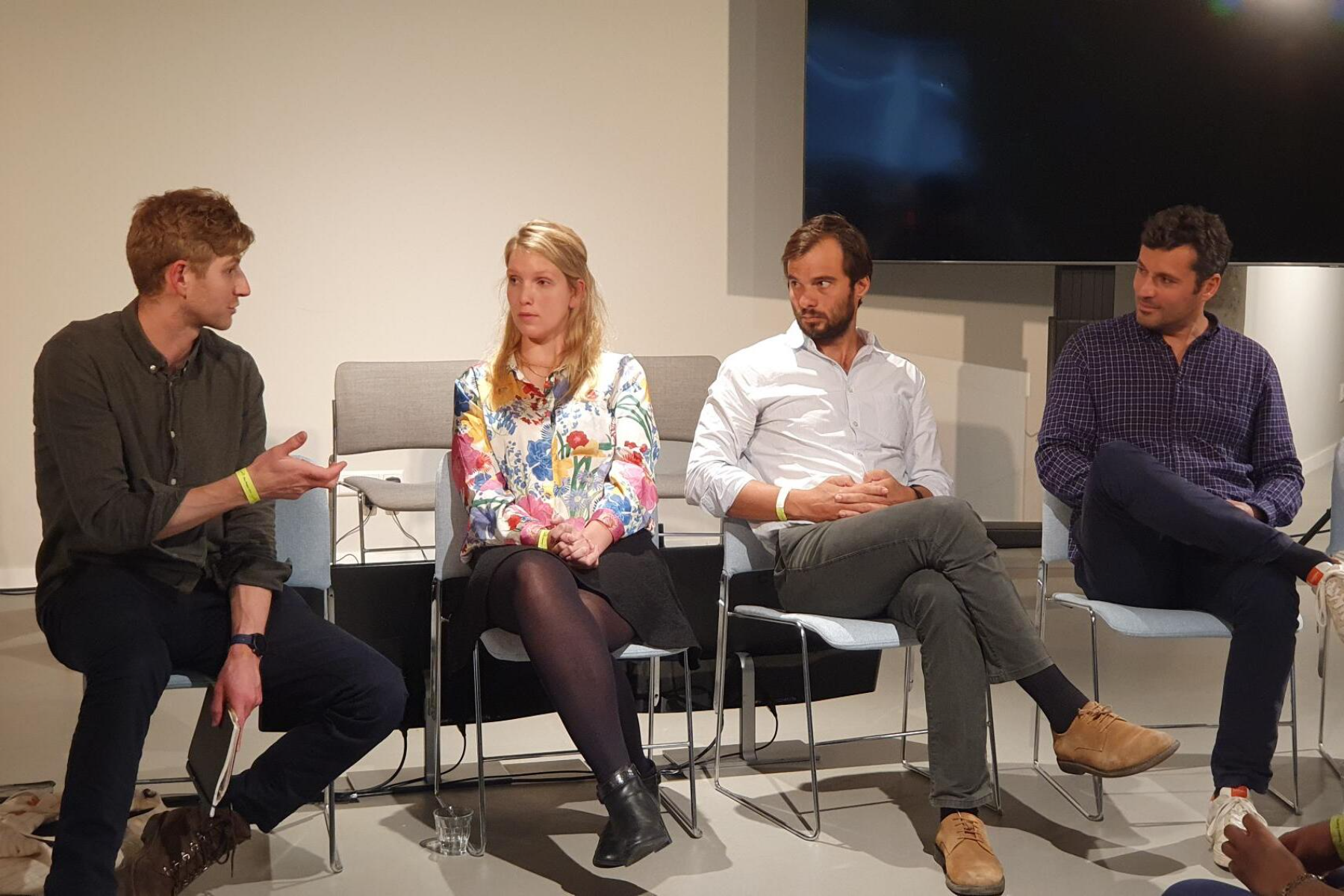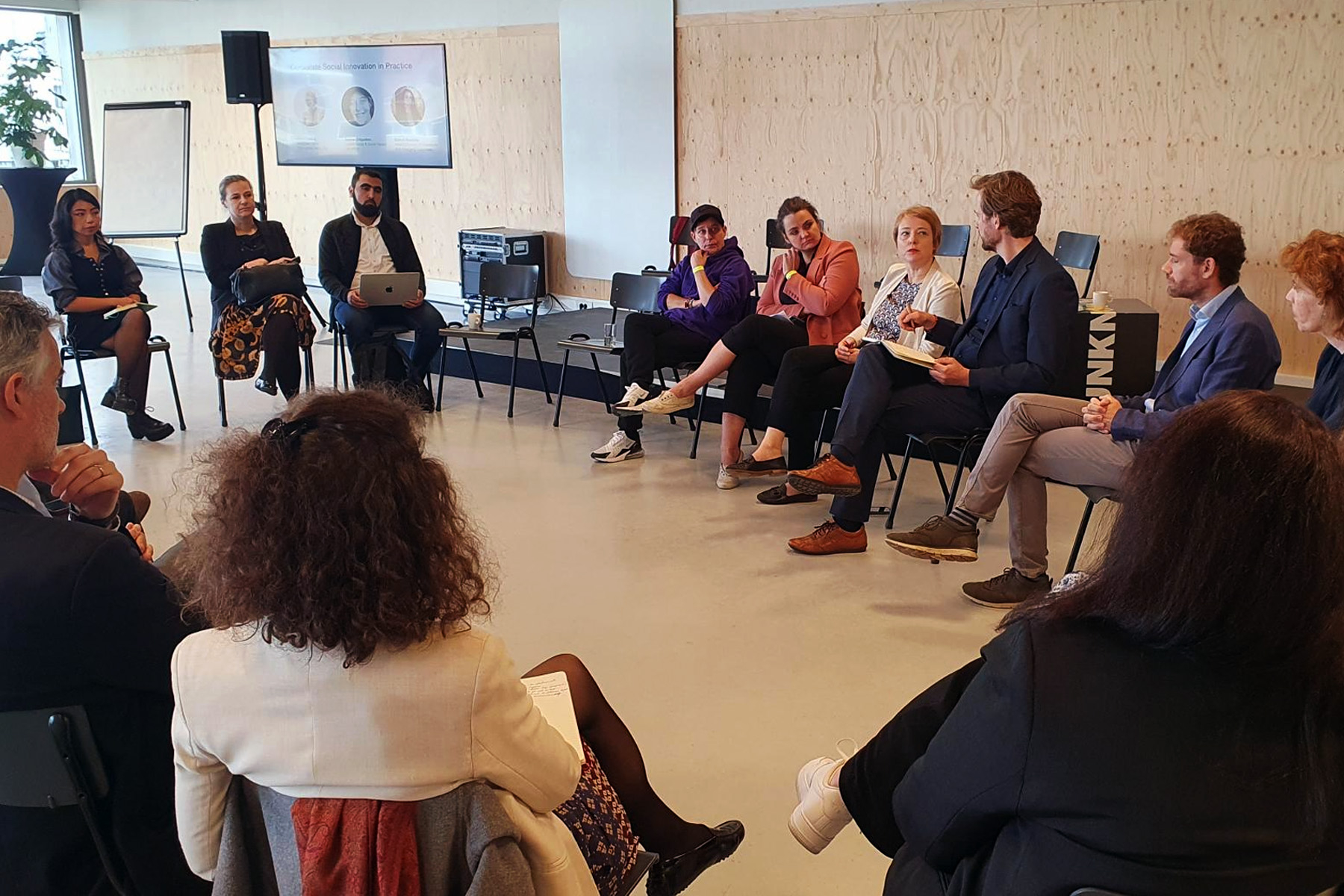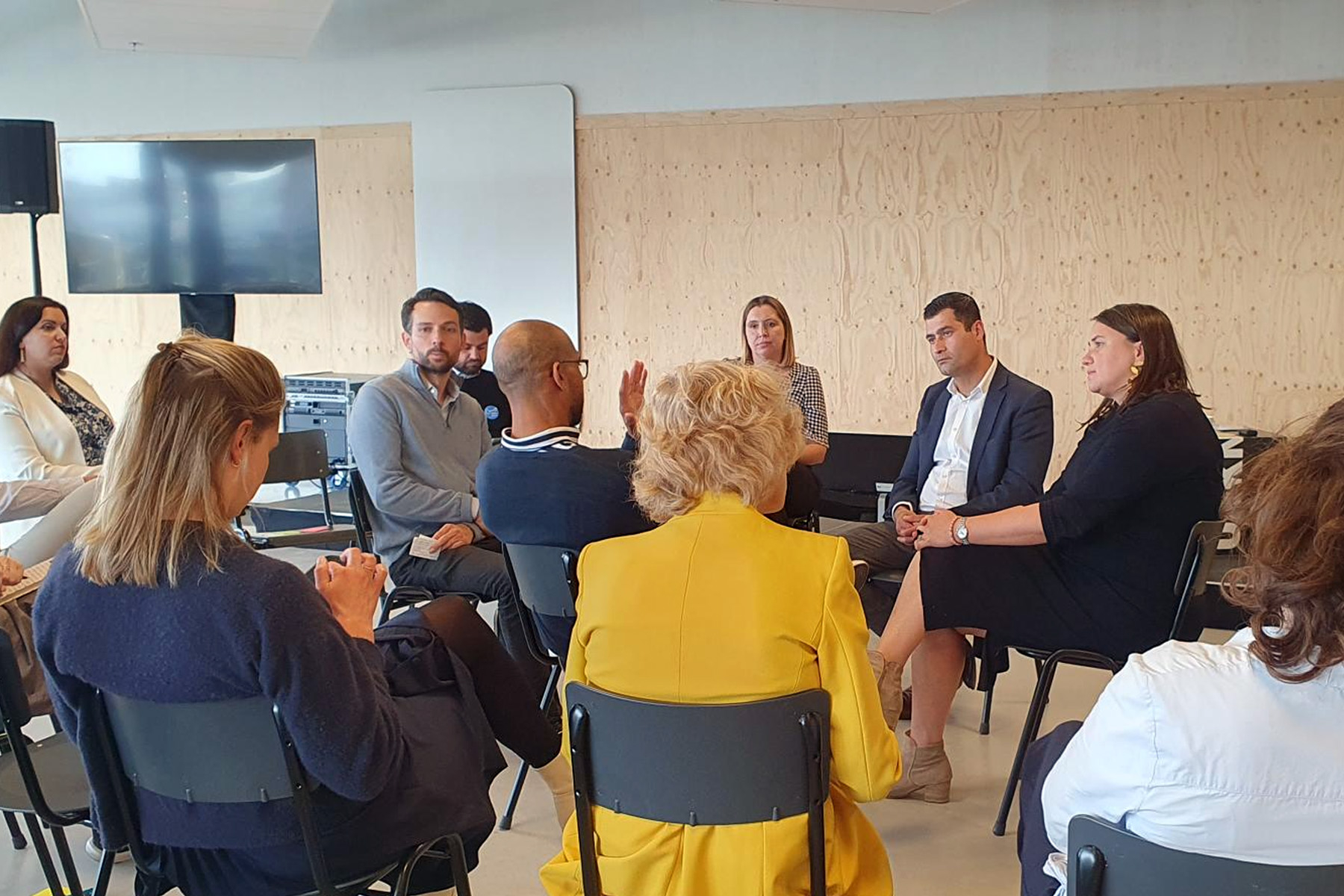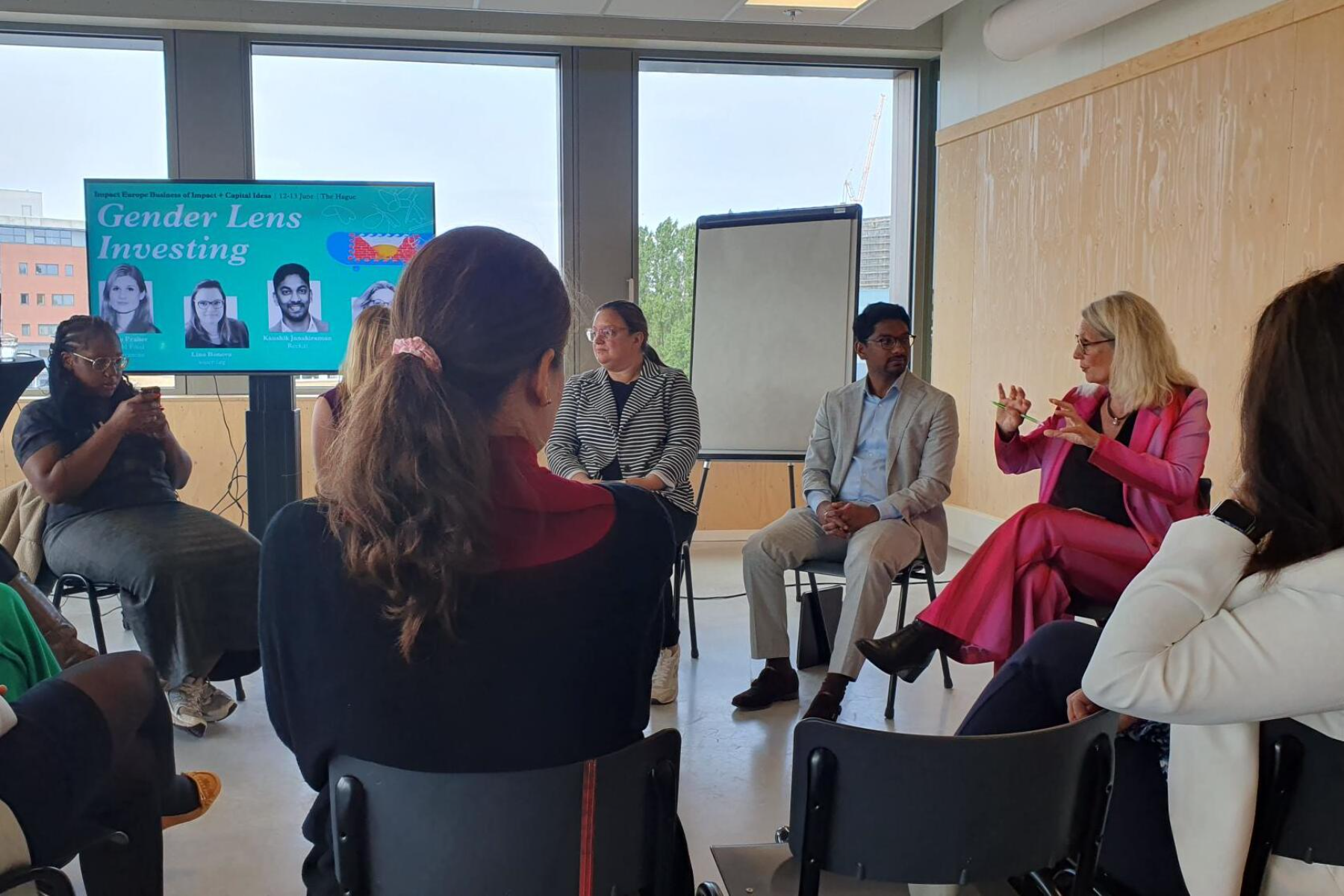Behind the Curtain: Corporate Social Innovation in Practice
Last week, Impact Europe organised its annual Business of Impact conference in The Hague, gathering companies and corporate foundations at the forefront of corporate social innovation. The Schwab Foundation’s Global Alliance for Social Entrepreneurship partnered with Impact Europe on two key sessions at the event. The first was an invite-only meeting for the Corporate Leadership Council on Social Innovation. The second was a panel discussion on corporate social innovation, moderated by the Head of the Global Alliance, Daniel Nowack, alongside Emma Ursich at Generali, Sophie Criquelion at Decathlon and Solene Boutoille at AXA.
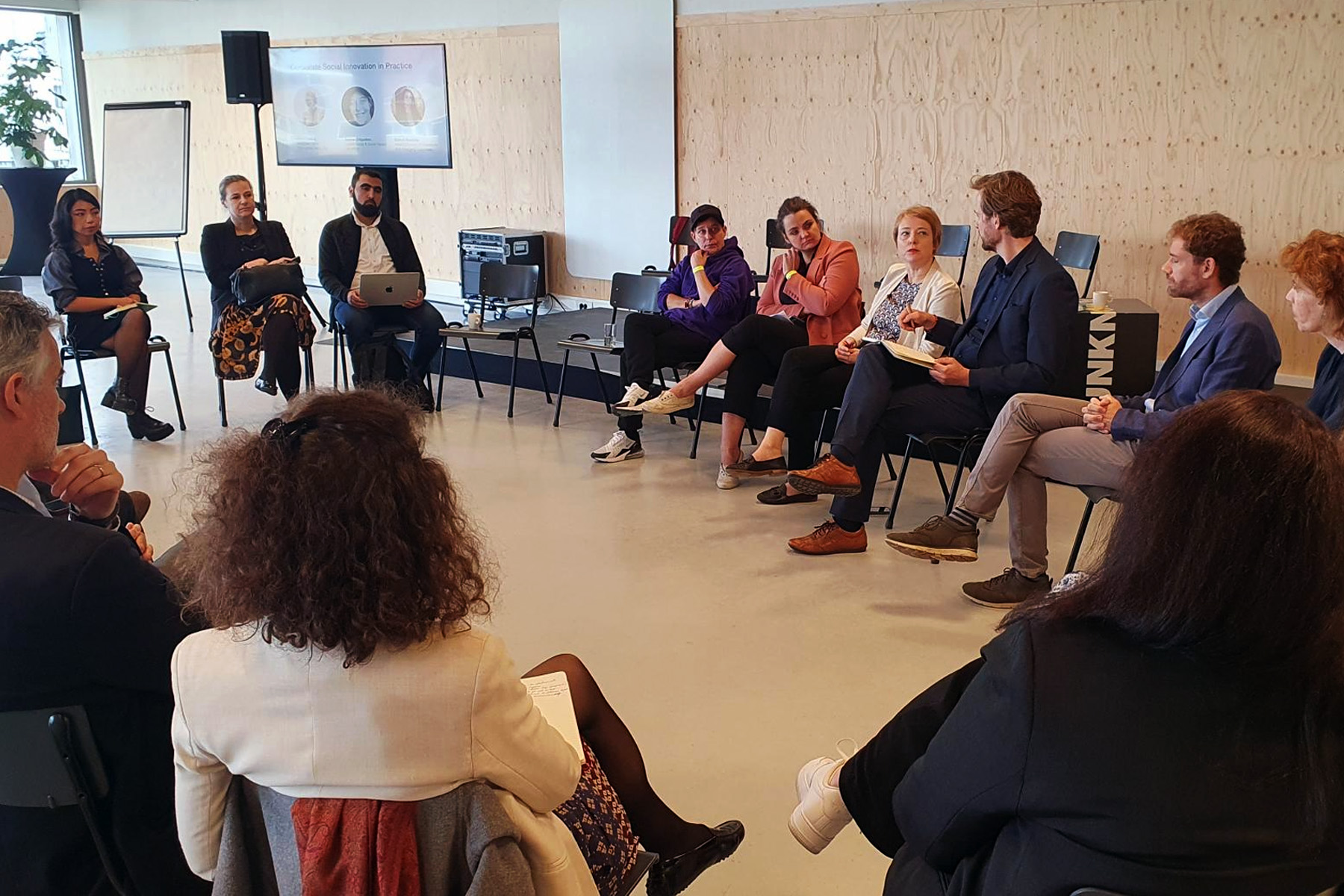
Both sessions allowed open and honest discussions about the current state and future of corporate social innovation. The rooms were filled with people who deeply cared about creating a positive impact. Leaders, innovators, and change-makers came together not to boast about their achievements but to speak candidly about their challenges and seek collective solutions.
Here is what we learned:
We have come a long way
Since Impact Europe launched its Business of Impact conference series, the space has advanced significantly. Corporate social innovation has moved beyond corporate social responsibility (CSR) to become a business capability that drives impact and business results.
AXA’s Emerging Customers program, for example, is a for-profit business unit developing affordable and fit-for-purpose insurance offerings, from health to home insurance, for an average of $20 per year. It serves 14 million customers in low- and middle-income countries, with an annual revenue of $300 million.
This example is just one of many highlighted throughout the sessions. We outline several similar case studies in our report, The Corporate Social Innovation Compass: Accelerating Impact through Social Enterprise Partnerships. Corporate social innovation initiatives now range from light-touch ecosystem support, such as supporting network growth and advocating for new policies, to full-scale business integration.
Engaging with social innovators and creative solutions
There are around 10 million social enterprises globally today, generating around $2 trillion in revenue each year and 200 million jobs — all while creating a positive impact. As outlined above, companies can engage with these social enterprises in many ways to attract and retain talent, accelerate innovation, provide access to new markets, create brand value, and support both sustainability and financial goals.
For example, Greyston Bakery, a New York-based organization that supplies baked goods to major corporations like Ben and Jerry’s, adopted an innovative “Open Hiring” model. Under the model, candidates sign up on a waiting list and, when a role opens up, the first candidate is hired to prove themselves on the job instead of sending in a CV or sitting for a formal interview. Greyston works closely with large companies like IKEA, helping them to roll out open hiring to more than 4000 jobs worldwide.
Another route highlighted in discussions was strategic alignment between core business and corporate philanthropy, leveraging a company's core assets — talent, client relationships, technological expertise, or networks — for impact. Generali, for example, created a home insurance product for refugees, guided by the corporate foundation, The Human Safety Net. While the business contributed with technical expertise on product design, the corporate foundation supported with insights into the issue of migration.
ESG, regulation and the race to the middle
Implementing effective corporate social innovation is no easy feat. Initiatives have been affected by pushback on environmental, social and governance (ESG). In recent years, many corporate social innovation initiatives have leaned on a narrative based on ESG requirements and intensifying regulation. At this point, however, there is a risk that compliance and reporting crowd out budgets for implementing corporate social innovation .
Therefore, regulation is seen as a double-edged sword. Some consider it a constraint, others an enabler. There was consensus that social innovation helps companies anticipate and comply with regulations on social responsibility, such as supply chain due diligence or social taxonomy.
India's Companies Act requires corporations to invest 2% of pre-tax profits into CSR. Initially, it led to inefficiencies, but over time, it created significant demand for social innovation and became integrated into corporate strategies. However, similar laws implemented in other countries have not always yielded the intended benefits and have discouraged collaboration.
The group emphasized that one way or another, the focus should be on measuring the tangible impact of corporate social innovation, not just compliance or a rally to outspend each other. Regulation tends to create a race to the middle, but companies should aim higher, striving for genuine, impactful change. One thing was certain: failing to act at all would pose a significant future risk for society and the viability of businesses.
Building the case for social innovation
Of course, buy-in from senior leadership and stakeholders is needed to make this happen. Companies can build a strong business case for their corporate social innovation initiatives by constantly gathering and analysing data. Impact metrics provide much-needed, tangible proof of the benefits of social innovation. Hindustan Unilever, for example, showed a Social Return on Investment (SROI) of 15x for its Prabhat initiative, engaging communities along its supply chain. That way, the initiative ensures executive buy-in and anchors its activities with a clear business case to Hindustan Unilever.
Executive sponsorship is also a key success factor for corporate social innovation initiatives. Taking executives into the field to experience firsthand impact can strengthen support. As initiatives mature, though, the reliance on executive sponsorship should decrease, giving way to grassroots believers and cultural change.
Unfortunately, this buy-in can be easily disrupted by leadership changes. Therefore, executive buy-in needs to be complemented by bottom-up alliance building, long-term partnerships and multi-year commitments to social innovation, like the Rise Ahead Pledge, to ensure continuity and stability.
Going faster and further together
As the conference drew to a close, there was a strong sense of shared purpose and commitment. The journey of corporate social innovation is not without its challenges, but also full of opportunities. Business of Impact was a testament to the power of honest conversations. It reminded us that real change comes from acknowledging difficulties, sharing insights, and working together towards a common goal.
Your organisation, too, can be recognised in social entrepreneurship, develop social innovation as a future business capability, and collaborate for a sustainable future by signing the Rise Ahead pledge and joining other visionary companies. Any company with a global footprint can sign the commitment to take action in time for 2030, aligned with the UN Sustainable Development Goals. Together, we can build an inclusive economy where people, nature and businesses thrive.

